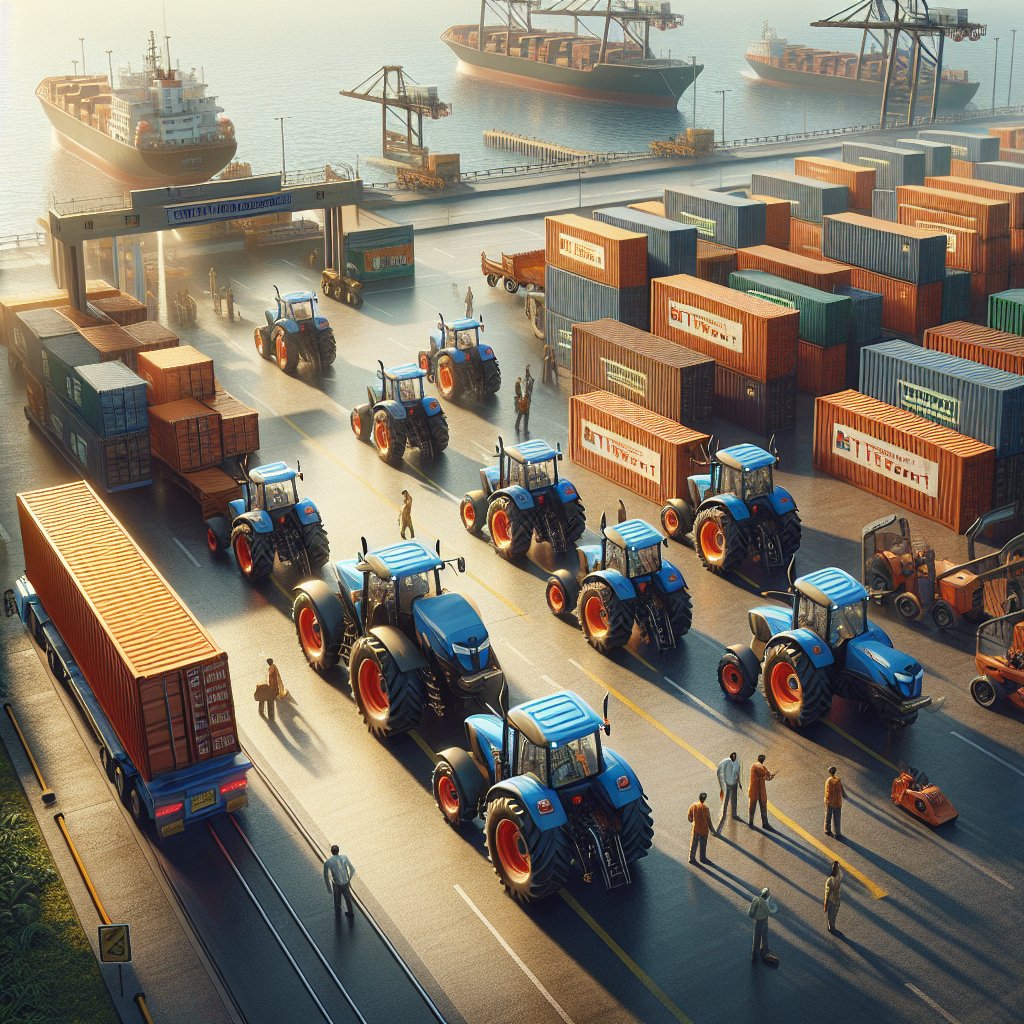Tractors have revolutionized the agricultural landscape, transforming labor-intensive tasks into streamlined operations and boosting productivity across farms of all sizes. From humble beginnings to sophisticated machines featuring cutting-edge electronics, these vehicles continue to define the essence of modern farming. This article explores the history, leading manufacturers, and future directions in the world of tractors.
The Evolution of Tractors and Their Impact on Modern Agriculture
The journey of the tractor began in the late 19th century with steam-powered prototypes that replaced animal labor. Over time, innovations in the internal combustion engine, hydraulics, and electronics propelled tractors into indispensable tools on every farm. Today’s models boast powertrain systems that deliver exceptional horsepower while maintaining impressive efficiency.
Key milestones in tractor development include:
- 1892: First commercially successful steam tractor introduced.
- 1901: Gasoline-powered tractors emerge, reducing costs and complexity.
- 1940s: Diesel engines gain popularity for enhanced reliability and torque.
- 1970s: Introduction of computerized control systems and crumbs of early precision farming.
- 2000s: Widespread adoption of GPS guidance, telematics, and advanced hydraulics.
These advancements have enabled farmers to increase yields, optimize resource use, and implement sustainable practices. The shift from purely mechanical units to intelligent machines marks a new era in which data-driven decisions are as crucial as mechanical power.
Profiles of the Top 10 Tractor Brands in the World
Each of the leading tractor manufacturers offers a unique blend of innovation, durability, and service support. Below is an overview of the top 10 brands, showcasing their strengths and signature technologies.
- John Deere
Overview
Synonymous with quality, John Deere leads in global market share. Known for its iconic green and yellow color scheme, the brand offers tractors ranging from compact models to high-horsepower giants.
- Case IH
Overview
Case IH focuses on high-performance machinery, featuring the Magnum and Steiger series. Their Axial-Flow combines and precision planting solutions set industry benchmarks.
- New Holland
Overview
With a heritage spanning over a century, New Holland integrates sustainable technologies, including advanced emission controls and alternative-fuel prototypes.
- Massey Ferguson
Overview
Part of AGCO Corporation, Massey Ferguson is celebrated for its versatile mid-range tractors and renowned global service network.
- Fendt
Overview
German-engineered Fendt tractors stand out for their Vario continuously variable transmission (CVT), delivering seamless acceleration and exceptional performance.
- Kubota
Overview
Known for compact tractors and utility vehicles, Kubota excels in ergonomic design and fuel economy, making it a favorite among smallholder farmers.
- Deutz-Fahr
Overview
Combining Italian styling with German engineering, Deutz-Fahr tractors offer advanced electronics and high-torque engines suitable for every farming task.
- Claas
Overview
Although famous for combines, Claas also produces robust tractors with cutting-edge automation and precision farming tools.
- Mahindra
Overview
As the world’s largest tractor manufacturer by volume, Mahindra focuses on durability and connectivity features, serving emerging markets with competitively priced models.
- Valtra
Overview
Valtra’s customizable tractors cater to diverse climates and farm sizes. Their smart interior design emphasizes operator comfort and intuitive controls.
Key Innovations and Future Trends in Tractor Technology
Continuous advancement in agriculture ensures tractors evolve beyond mere power units. The most impactful trends shaping the future include:
- Autonomous Operation: Trials of driverless tractors use sensors and AI to navigate fields, optimizing pathing and reducing labor costs.
- Precision Farming: Integration of precision GPS systems and variable-rate technology (VRT) allows targeted application of seeds, fertilizers, and pesticides.
- Electrification: Electric and hybrid models promise reduced emissions and lower operational expenditure. Battery technology breakthroughs are critical to wider adoption.
- IoT and Telematics: Real-time data exchange between machines and farm management software enhances decision-making, uptime, and maintenance scheduling.
- Sustainable Practices: Manufacturers emphasize lower-carbon footprints and renewable fuel compatibility to meet stringent environmental regulations.
These innovations foster more resilient and resource-efficient farms, addressing global food security challenges and environmental concerns.
Maintenance, After-Sales Support, and Global Service Networks
Choosing a top tractor brand extends beyond the initial purchase price. Effective maintenance and access to genuine spare parts can determine a machine’s lifespan. Leading manufacturers invest heavily in:
- Certified Service Centers: Trained technicians ensure repairs adhere to factory standards, preserving durability.
- Extended Warranty Programs: Options for coverage on major components like transmissions and engines.
- Mobile Service Units: On-site repairs minimize downtime, especially during critical planting and harvest windows.
- Online Parts Portals: Simplified ordering of OEM components maintains operational continuity.
Comprehensive support networks reinforce the value proposition of top brands, ensuring that farmers can rely on consistent performance throughout the agricultural calendar.



